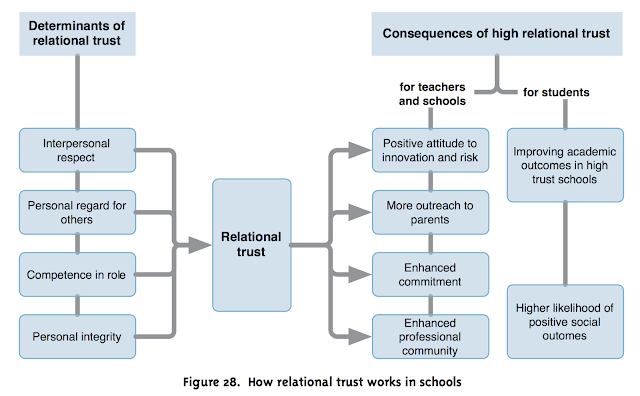The 'gogies'
Pedagogy, Andragogy,
Heutagogy
View a short video to explain What is Heutagogy?
There are very
slight differences in the three 'gogy' practices. All of which are probably
more designed around age and stage or knowledge and skill. Initially, when
first starting school, as curious as humans are you don't know what you don't
know. Strategies and knowledge are taught to you via the teacher designing the
learning for you and therefore, a Pedagogical approach is used. As adults, you
become more able to self direct your learning in an area of your interest or
need. Therefore, the teacher becomes a guide or facilitator and only provides
what an adult is unable to help themselves with - thus being the Andragogy
model. At any age, dependant on your knowledge and skill set, heutagogy can be
practiced as it is focused on learners being their own teachers. A problem is
posed and students go off to solve it using all the skills, strategies, and
knowledge that they can source. Students become fully immersed in their
learning (Hase, 2013). In a nutshell:
Heutagogy
is self directed learning where learners are interdependent and able to manage
their own learning.
Andragogy
is adult learning. Adults strive for autonomy and self-direction in learning.
Pedagogy
is about children's learning. The learner is dependent on the teacher for what,
how and when anything is learned.
Traditionally,
Pedagogy was defined as the art of teaching children and Andragogy as teaching
adults. These definitions have evolved to reflect teacher practices. As such,
andragogical and heutagogical practices can be used with children and youth
depending on the knowledge and skill set of the students.
Defining Pedagogy
depends on how people think about what they are discussing. For example - how
people think about ‘pedagogy’ as a term is changing. It’s original, and still
main, definition - “Pedagogy is the art, science, or profession of teaching” OR
“Pedagogy is the academic discipline that deals with the theory and practice of
teaching and how these influence student learning” - etc. In general, pedagogy
is an encompassing term concerned with what a teacher does to influence
learning in others. Pedagogy develops from a range of factors including
theories and research evidence, political drivers, evidence from practice,
individual and group reflection, educators’ experiences and expertise, and
community expectations and requirements. It informs both curriculum (all
the interactions, experiences, activities, routines and events planned and
unplanned) and teaching in a service.
The human brain is
sensitive to culture and environment. Memory is fragile unless strengthened
actively. With the Pedagogy model, assessment is part of the teaching process
that educators plan for and teach around and assessment is seen as a punishment
or threat. Threats shut our brains down (Mitra, 2013). Students are not given
the chance to show their learning and understanding in a way that fits them as
individuals. This practice puts stress on the human brain due to the change in
the environment during assessment time - think back to the 19th and 20th
Century and compare how much has changed since then in reference to assessment.
Effort develops the brain. Learning needs to be multi sensory and provided in
small chunks with repetition. Real learning is unpredictable, when people are
ready to learn they will thrive (Hase, 2013).
Pedagogy doesn’t
have to have the attached values of ‘control’ or ‘external motivation’ etc
associated with it that some people nowadays seem to want to associate it with.
Therefore Pedagogy remains the MAIN thing of Visible Learning because it is
about the “art, science & profession” of teaching. We might say the goal of
Visible Learning is to develop self-regulating learners (heutagogy) but we do
this by working with adults (andragogy) in how to better teach children
(pedagogy). Heutagogy develops the learners capability to know how to learn; be
creative; have a high degree of self efficacy; work collaboratively; and seek
questions and answers to solve problems. Therefore, John Hatti's Visible
Learning, while it fits all models, I feel suits the theory of Heutagogy or at
least, its end goal. Visible Learning is based on seeing learning through the
eyes of the student and them being assessment capable. For learners to become
assessment capable, many adaptations and/or changes need to be considered and
implemented in the practices of our teachers. Students need to be taught
processes of learning and teachers need to allow these processes to be
practiced repeatedly. With these adaptations and/or changes, our students will
thrive under any of the 3 models - Pedagogy, Andragogy, Heutagogy.
Hase, S. (2013).
National Tertiary Learning and Teaching) Conference. Retrieve from: https://www.youtube.com/watch?v=uk5RYsZxwOM.
31 August 2018.
Hatti, J. (2012). Visible Learning For Teachers -
Maximising Impact on Learning
Holmes, G, &
Abington-Cooper, M. (?) Pedagogy vs. Andragogy:
A False Dichotomy? Retrieved from: https://scholar.lib.vt.edu/ejournals/JTS/Summer-Fall-2000/pdf/holmes.pdf.
30 August 2018.
Jackie
Gertein: Retrieved from: https://usergeneratededucation.wordpress.com/tag/heutagogy/.
30 August 2018
Merriam, S. (2001).
New Directions for Continuing: The new update on adult education. No. 89,
Spring Jossey-Bass: San Francisco, California. Retrieved from https://pdfs.semanticscholar.org/348f/4ec482384d90bafad92e226fa4471ff56539.pdf.
30 August 2018.
Whiteside, L. (?).
What is Pedagogy? How does it influence our practice. Child Australia.
Retrieved from https://childaustralia.org.au/wp-content/uploads/2017/02/CA-Statement-Pedagogy.pdf
30th August 2018.


Comments
Post a Comment